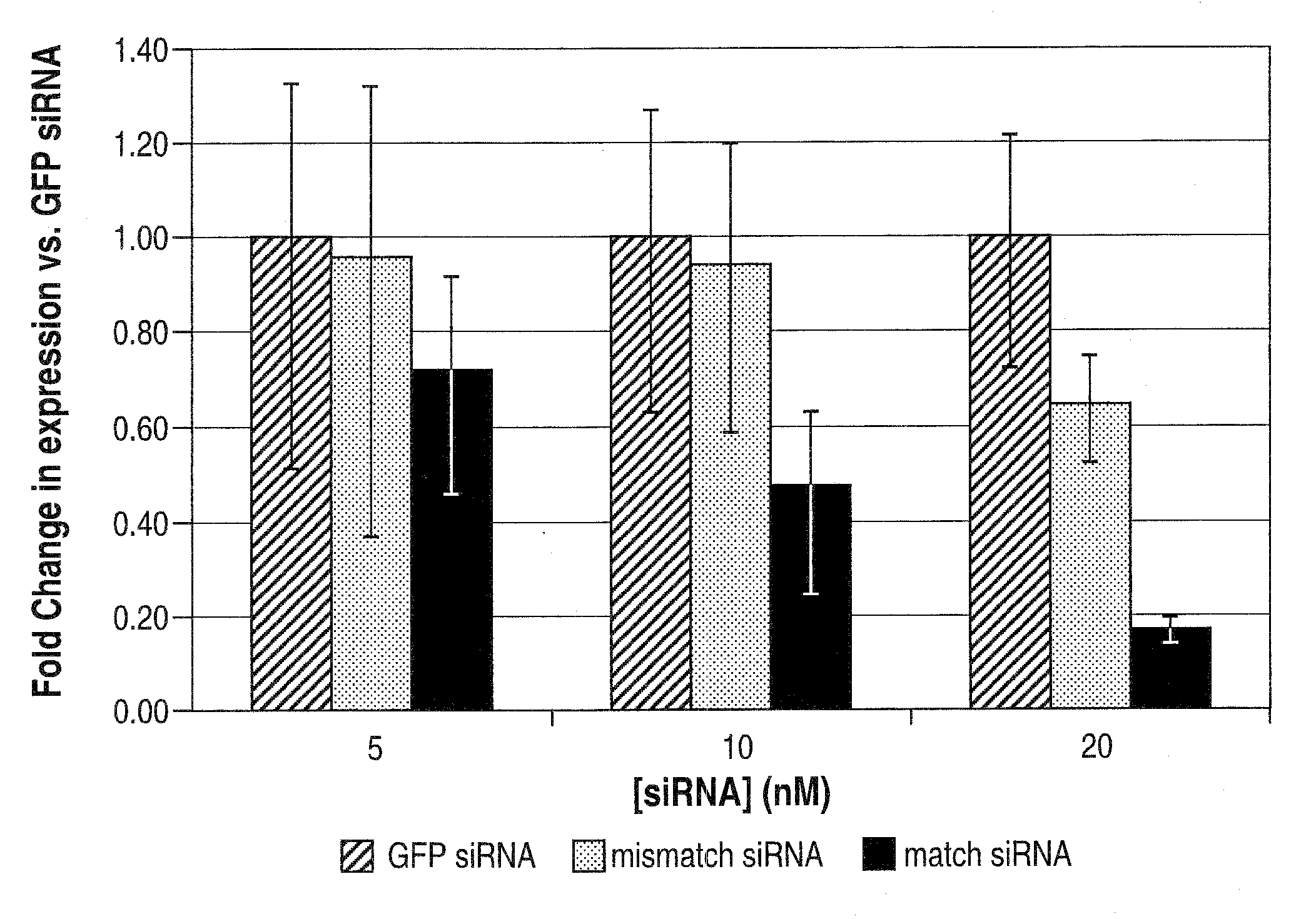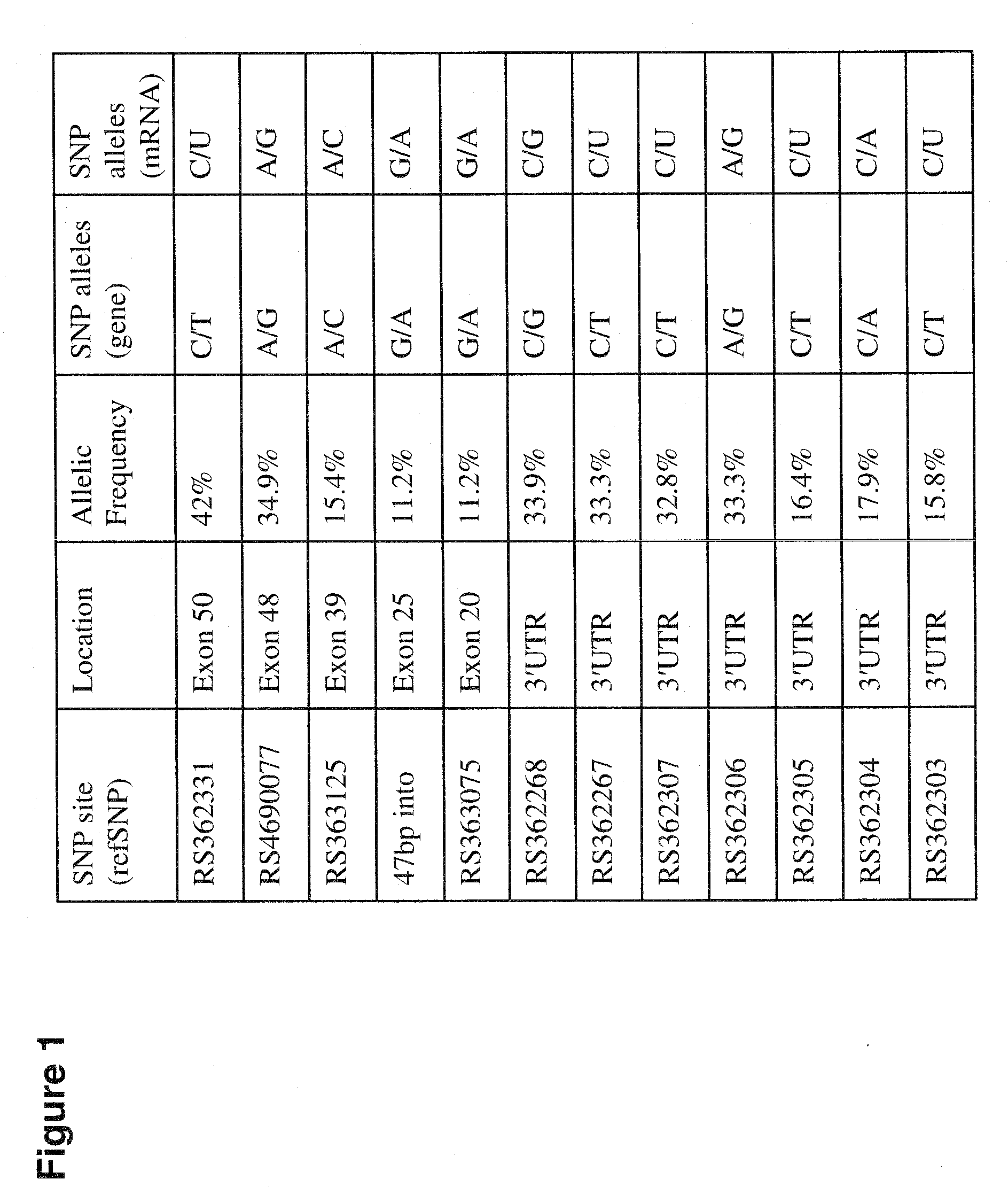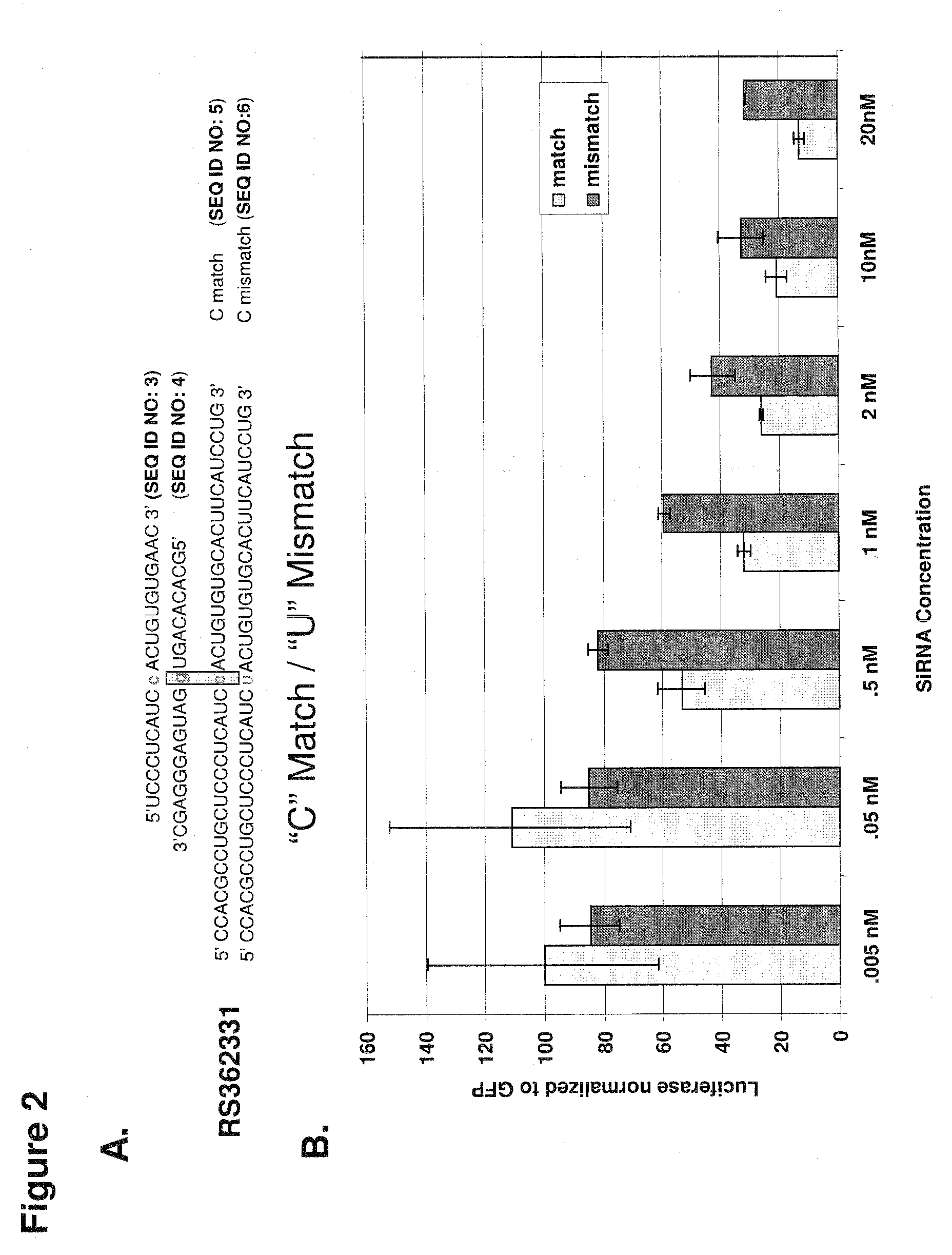RNA silencing compositions and methods for the treatment of huntington's disease
- Summary
- Abstract
- Description
- Claims
- Application Information
AI Technical Summary
Benefits of technology
Problems solved by technology
Method used
Image
Examples
example i
SNP Analysis in Patients with Huntington's Disease (HD)
[0222]Single nucleotide polymorphism (SNP) sequencing analysis was performed to identify heterozygotic SNPs in patients with Huntington's Disease (HD). DNA samples were obtained from brain repositories in Charlestown, Mass., USA and New York City, N.Y. and a DNA repository in Ulm, Germany.
[0223]In one study, a total of 195 subjects (HD and control) were examined. Twenty-one SNP sites were identified; eighteen were reported in SNPPER and three have not previously been reported. In this population, four reported SNP sites were not confirmed. 149 / 195 subjects (76%) contained SNP heterozygosity. The USA and German populations had 76% heterozygosity at SNP sites. HD patients and controls had the same frequency of SNP heterozygosity. Six SNP sites had an allelic frequency >30%.
[0224]In a second study, a total of twelve candidate polymorphic sites were sequenced in more than 107 HD brain specimens. Fifty-five percent of HD patients in ...
example ii
Testing of RNA Silencing Agents (e.g., siRNAs) Against htt SNPs
[0225]Two SNPs (at genomic positions RS 363125 and RS 362331) were selected to test RNAi discrimination in an in vitro reporter assay.
[0226]SiRNAs targeting each SNP were designed as described supra. siRNA strands were annealed (Elbashir et al., 2001a).
[0227]Target RNAs may be prepared as follows. Target RNAs are transcribed with recombinant, histidine-tagged, T7 RNA polymerase from PCR products as described (Nykanen et al., 2001; Hutvágner et al., 2002). PCR templates for htt sense and anti-sense target RNA preparation are generated by amplifying plasmid template encoding htt cDNA using primer pairs. Each primer pair consists of forward and reverse primers which are complementary to regions that are immediately upstream and downstream, respectively, of one of the two alleles of a heterozygous SNP site.
[0228]Each siRNA was tested using a cell-based in vitro luciferase reporter assay. In vitro RNAi reactions and analysis ...
example iii
Effect of RNA Silencing Agents (e.g., siRNAs) on Mutant htt Protein Expression
[0234]Western blotting may also be employed to test the ability of siRNAs to down-regulate endogenous Htt protein in cultured cells using any of the techniques described infra.
[0235]RNA silencing activity of SNP-specific siRNAs can be tested HeLa cells. HeLa cells are maintained at 37° C. in Dulbecco's modified Eagle's medium (DMEM, Invitrogen) supplemented with 10% fetal bovine serum (FBS), 100 unit / ml penicillin and 100 μg / ml streptomycin (Invitrogen). Cells are regularly passaged at sub-confluence and plated at 70% confluency 16 hours before transfection. Lipofectamine™ (Invitrogen)-mediated transient transfection of siRNAs are performed in duplicate 6-well plates (Falcon) as described for adherent cell lines by the manufacturer. A standard transfection mixture containing 100-150 nM siRNA and 9-10 μl Lipofectamine™ in 1 ml serum-reduced OPTI-MEM® (Invitrogen) are added to each well. Cells are incubated ...
PUM
| Property | Measurement | Unit |
|---|---|---|
| Fraction | aaaaa | aaaaa |
| Frequency | aaaaa | aaaaa |
| Lipophilicity | aaaaa | aaaaa |
Abstract
Description
Claims
Application Information
 Login to View More
Login to View More - R&D Engineer
- R&D Manager
- IP Professional
- Industry Leading Data Capabilities
- Powerful AI technology
- Patent DNA Extraction
Browse by: Latest US Patents, China's latest patents, Technical Efficacy Thesaurus, Application Domain, Technology Topic, Popular Technical Reports.
© 2024 PatSnap. All rights reserved.Legal|Privacy policy|Modern Slavery Act Transparency Statement|Sitemap|About US| Contact US: help@patsnap.com










